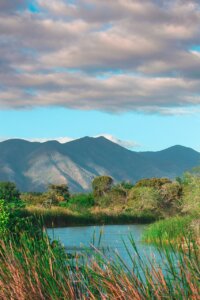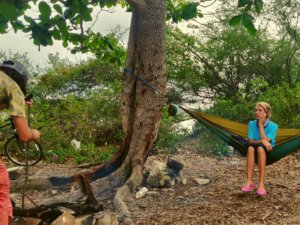Cuba, known for its vibrant culture, pristine beaches, and historic cities, is not often thought of as a trekking and camping destination. However, this Caribbean island has much more to offer in terms of natural beauty and outdoor adventures.
From the lush mountains of Sierra Maestra to the picturesque valleys of Viñales, Cuba boasts diverse landscapes that are perfect for trekking enthusiasts.
In this article, we will explore some of the top places for trekking in Cuba, along with camping options, allowing you to immerse yourself in the island's natural wonders.
Top Places To Visit for Trekking
When it comes to trekking in Cuba with camping, there are a few standout destinations that offer excellent opportunities for outdoor enthusiasts. Here are some of the top places for trekking and camping in Cuba:
1. Sierra Maestra
The Sierra Maestra mountain range in southeastern Cuba is a fantastic destination for trekking and camping. It offers a range of trails that wind through lush forests, picturesque valleys, and stunning peaks. The Pico Turquino trek is particularly popular, as it takes you to the highest point in Cuba. Wildcamping is possible or you may stay in designated areas like a log cabin along the trails.


2. Topes de Collantes
Located in the Escambray Mountains near Trinidad, Topes de Collantes is a nature reserve with breathtaking landscapes and hiking opportunities. There are several trails that allow you to explore the area's waterfalls, caves, and dense forests. The Caburní Trail is a favorite among trekkers and offers options for wildcamping along the way.
3. Viñales Valley
The Viñales Valley in western Cuba is known for its stunning karst landscapes and tobacco fields. It's a UNESCO World Heritage Site and offers various hiking trails that lead you through limestone mogotes, farmland, and vibrant rural communities.
Wildcamping is possible in the valley, allowing you to fully immerse yourself in the natural beauty of the area.


4. Parque Nacional Ciénaga de Zapata
Located on the Zapata Peninsula in southern Cuba, this national park is a paradise for birdwatching and nature lovers. It features swamps, mangroves, and diverse ecosystems.
There are trails within the park, such as the Enigma de las Rocas Trail, that offer a chance to explore its unique flora and fauna.
El Yunque
Situated near Baracoa in eastern Cuba, El Yunque is a table-top mountain that offers a challenging and rewarding trekking experience.
The hike to the summit provides stunning views of the surrounding landscape, including forests, rivers, and the coastline. Camping is permitted at the base of the mountain.

Remember to adhere to local regulations and obtain any necessary permits or permissions before embarking on your trekking and camping adventure in Cuba. It's also advisable to consult with local guides or tour operators for up-to-date information and guidance on the best routes and camping options in each location.
How to Choose a Hiking Route in Cuba?
Choosing a hiking route in Cuba requires careful consideration of several factors, including your fitness level, experience, interests, available time, and the specific landscapes you wish to explore. Here are some steps to help you choose the right hiking route in Cuba:
1. Determine Your Fitness Level and Experience
Assess your fitness level and hiking experience honestly. Be aware of your physical capabilities and any limitations. Consider the duration, difficulty, and terrain of the routes you're considering.
2. Research Cuba's Hiking Destinations
Familiarize yourself with the different hiking destinations in Cuba, such as Sierra Maestra, Topes de Collantes, Viñales Valley, and others mentioned earlier. Learn about the landscapes, trail conditions, attractions, and camping options available in each location.
3. Consider Your Interests
Determine what aspects of nature and culture you're most interested in. Do you prefer lush mountains, coastal trails, or unique karst landscapes? Are you interested in birdwatching, historical sites, or local communities? Choose a route that aligns with your interests and allows you to have a fulfilling experience.
4. Assess Time Constraints
Consider the duration of your trip and the time available for hiking. Some routes require several days to complete, while others can be done in a day. Ensure that the route you choose fits within your available time frame.
5. Seek Local Advice and Guidebooks
Consult local guides, tour operators like Cubanture, or experienced hikers who have explored Cuba's trails. We can provide valuable insights, up-to-date information on trail conditions, and recommendations based on your preferences.
Additionally, guidebooks or online resources may offer detailed information on hiking routes, difficulty levels, and points of interest.
6. Evaluate Trail Difficulty
Assess the difficulty level of the trails you're considering. Some routes may be more challenging, involving steep ascents, rugged terrain, or long distances. Choose a trail that matches your physical capabilities and comfort level.
7. Safety Considerations
Prioritize your safety during the hike. Be aware of weather conditions, potential hazards, and the availability of emergency services in the area. Choose a route that matches your skill level and provides a safe environment for trekking.
8. Balance Popular and Off-the-Beaten-Path Routes
Consider the popularity of the hiking routes. While popular trails may offer well-marked paths and established camping areas, they can also be crowded. Alternatively, off-the-beaten-path routes may provide a more secluded experience but might require additional preparation and navigation skills.
9. Trust Your Instincts
Ultimately, trust your instincts and choose a hiking route that resonates with you. Listen to your preferences, interests, and limitations. Select a route that aligns with your goals and will provide a memorable and enjoyable experience.
10. Choose Your Hiking Gear
Choosing the right hiking gear is crucial for a comfortable and safe trekking experience in Cuba. Here is a list of essential items to consider when selecting your hiking gear:
Frequently asked questions
There are no specific age restrictions for kids to go hiking in Cuba. However, it's important to choose trails that are suitable for their age and physical abilities.
Yes, you can bring your dog hiking in Cuba, but it's important to check the regulations of the specific hiking trail you plan to visit.
Some general safety tips for hiking in Cuba with kids and dogs include:
- Stay on designated trails and respect any regulations or restrictions.
- Keep your children and dogs within sight and under control at all times.
- Be aware of potential hazards such as poisonous plants, slippery surfaces, or steep drops.
- Carry a first aid kit for any minor injuries that may occur.
- Check the weather forecast before heading out and be prepared for changing conditions.
- Let someone know your hiking plans and estimated return time.
- Stay hydrated, use sunscreen, and protect against insects.
- Teach your children to follow trail etiquette and respect the environment.
This might also be interesting for you
Climbing off the beaten track in Cuba - camping at the climbing rock of Jaruco
Vor mir sehe ich eine matschfreie Weggabelung. Endlich! Der Schweiß...
Read moreWildcampen in Kuba – mit Kind und Zelt ins Nirgendwo
„Pssst!“ tönt es gespenstisch durch die Nacht. Dann ist es...
Read moreTrekking in Cuba (Hiking & Camping)
Kuba, welches für seine lebendige Kultur, seine unberührten Strände und...
Read more

